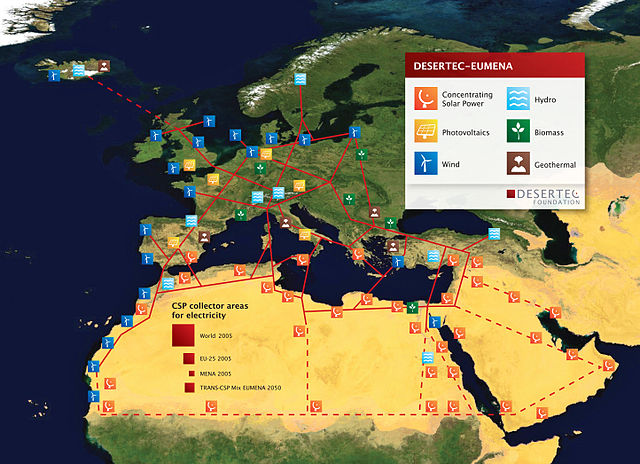Now that we have discussed how decentralized energy generation can be aligned with sustainable development, let us turn to another question: Can centralized, but we use the distributed generation model to harness renewable energy from the regions with most potential for their production and coordinate their distribution across continents?

The DESERTEC project proposes to do so, while addressing the energetic and environmental concerns of water desalination for the Middle East and North Africa. This is an incredibly ambitious project for "virtual power plants" that is described in the white paper by Trieb & Muller that you are assigned for this week. In addition, the Wikipedia page on DESERTEC is actually a very good source of information with numerous links to the literature.
The white paper itself covers numerous projections, ranging from estimates of the energetic needs of the three regions in question, Europe (EU), the Middle East (ME), and North Africa (NA), which they term EUMENA.
Technologically, the core of DESERTEC are line-concentrating solar thermal collectors. The schematics of these collectors are given in Figure 5 of the Trieb & Muller white paper. DESERTEC proposes to use these collectors to obtain up to 250 GWh/yr.km2 in the Middle Eastern and North African deserts and complement such production with other renewable and non-renewables that may be locally available.
So, let's take this project into our class forum and discuss the following points this week.
